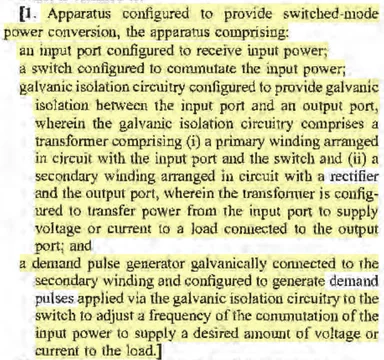Industry standards can be helpful for a patentee tasked with proving infringement of standard-compliant products. Standards often lay out mandatory features, such that a patentee may be able to use infringement of the standard itself as a shortcut to establish infringement of a standard-compliant product (although there are limits on that type of proof, including that the patent must cover all possible implementations of the standard).
The question of whether infringement by a standard can be used to shortcut infringement proofs for a product recently came up before Judge Andrews on a summary judgment motion by the plaintiff in TQ Delta, LLC v. 2Wire, Inc., C.A. No. 13-1835-RGA.
The defendant's products in TQ Delta were accused of implementing an infringing functionality set forth in the ITU-T's G.993.2, or VDSL2 ("very high speed digital subscriber line 2"), standard. The functionality is called "dynamic change of interleaver depth functionality," or "Dynamic D," for short. There was apparently no dispute that the products complied with the standard.
The plaintiff alleged that Dynamic D functionality was covered by the patent's claims and was mandatory under the VDSL2 standard. Judge Andrews rejected that assertion, and accepted the defendant's position that Dynamic D was optional:
I assume the truth of Defendant's statement that Dynamic D is an optional functionality in the VDSL2 standard. While that means standards compliance is insufficient to show infringement, it does not prove noninfringement. Dynamic D functionality infringes if it reads on the Asserted Claims, regardless of whether it is mandatory in VDSL2.
The question thus shifted to whether infringement was possible when the functionality was not enabled, characterized by the Court as a question of law:
Taking the evidence in the light most favorable to Defendant, I also assume to be true that Dynamic D's enablement in the Accused Products cannot be ascertained. Whether the Accused Products can infringe when Dynamic D is not enabled, however, is a question of law (i.e., what constitutes implementation of an infringing functionality), not fact.
The defendant asserted that the accused products did not meet the claim limitation "configurable to adapt forward error correction and interleaver parameter (FIP) settings" (i.e., Dynamic D functionality). Judge Andrews ruled that "configurable to" did not require that the functionality was enabled, but merely that "the functionality must be present 'without the need to rebuild, rewrite, or recompile the code'."
He then reviewed the expert testimony and other evidence submitted by the parties and found that there was no dispute of material fact regarding whether the accused products were "configurable to" Dynamic D functionality:
Viewing the evidence in the light most favorable to Defendant, both parties' experts at minimum agree that Dynamic D can be enabled if certain conditions are met. . . . If someone were to issue the correct commands and meet these conditions, Defendant does not dispute that the user could enable Dynamic D. . . . There is no genuine dispute that the source code of the Accused Products encodes Dynamic D functionality. Activation of Dynamic D does not require modification of the source code. I therefore find that the Accused Products are "configurable to" perform Dynamic D functionality.
Judge Andrews went on to address (and reject) several other arguments by the defendant, including that implementation of the VDSL standard did not itself satisfy certain claim limitations. He granted plaintiff's motion, and denied a motion for non-infringement by defendant.
If you enjoyed this post, consider subscribing to receive free e-mail updates about new posts.




